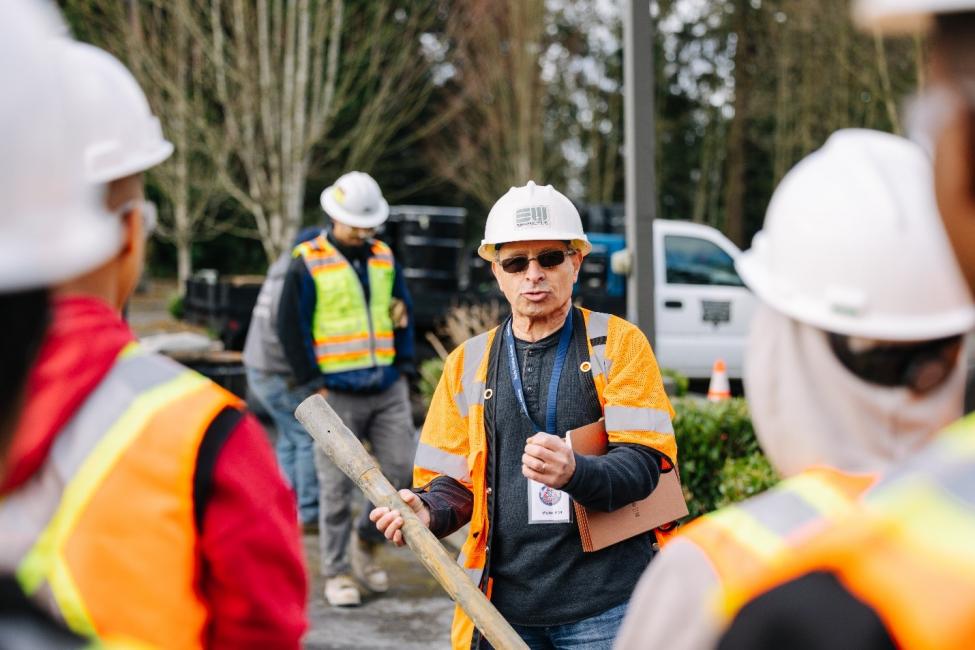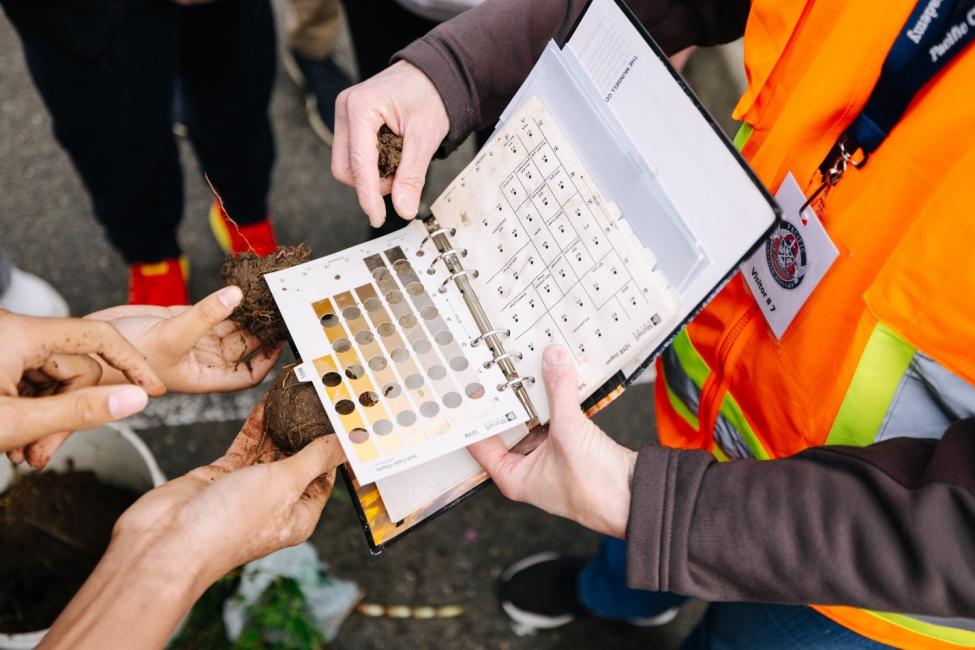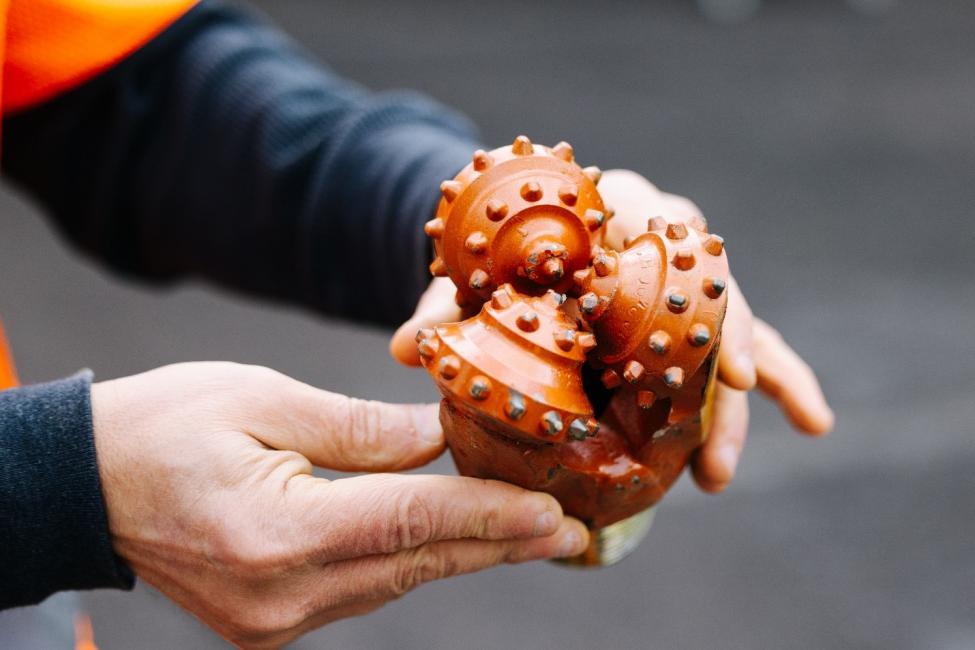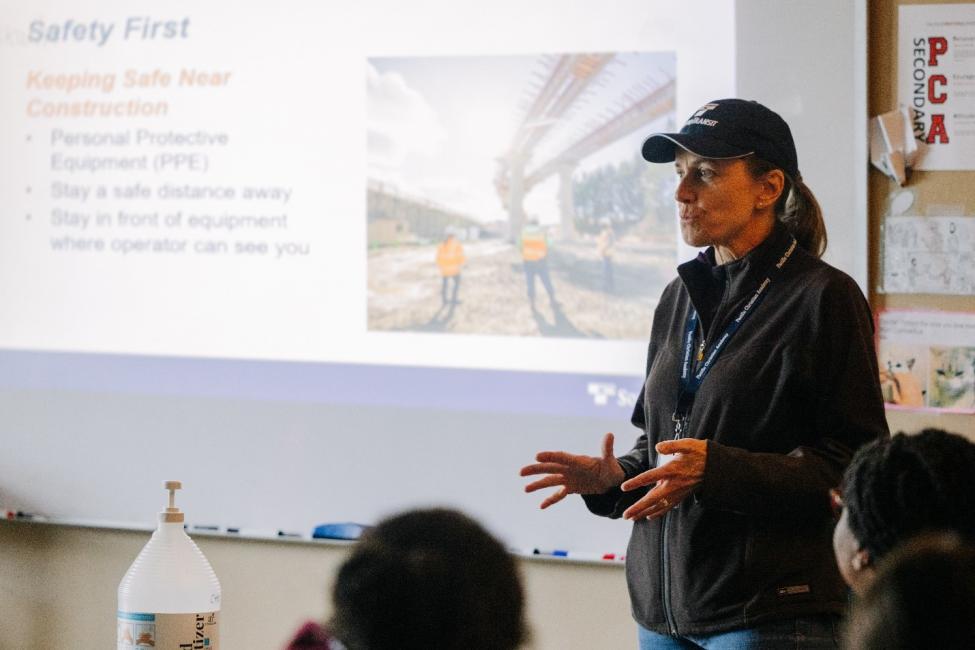In March 2022, Sound Transit invited four science classes at Pacific Christian Academy to observe how geotechnical borings and other fieldwork shape the design of projects like the future Operations and Maintenance Facility (OMF) South.
Pacific Christian Academy, a private K-12 school in Federal Way, is located within the project’s Board-identified preferred site for building the OMF South.
Teresa Vanderburg, a professional wetland scientist from Sound Transit’s Environment & Sustainability team, explained the importance of securing permits from cities to ensure that critical areas like wetlands and streams are protected before and after investigative work on the OMF site.
Understanding wetlands and streams as unique habitats for living species is a crucial part of addressing environmental impacts from major construction projects.
Hisham Sarieddine, a professional geotechnical engineer from the engineering firm Shannon & Wilson, explained how geotechnical borings to collect soil samples can help us better understand the ground below potential structures and prevent settlement of the structures after a project is completed.
The famous Leaning Tower of Pisa, Hisham noted, wouldn’t be so famous had there been a geotechnical engineer involved!
Next, students donned personal protective equipment and journeyed into the field to check out one of the geotechnical drill rigs. The drilling goes about 50-60 feet deep a day to collect soil samples to depths of more than 100 feet.
Teresa then had the students interact with a “wetland in a bucket,” filled with wetland soils and plant species. She used the bucket to talk about the characteristics of the onsite wetland located in the northeast corner of the property.
She explained how the texture and water content can affect the look and feel of wetland soils, and why wetlands are considered critical habitats in the City of Federal Way.
The team’s goal was not only to show what goes on behind large infrastructure projects, but to also showcase the variety of expertise and careers at the agency making these things happen.
Build your future - join our team
Sound Transit’s staff is growing as we expand light rail throughout the region.
We're looking for people who want to make a difference – whether it's in engineering and planning, construction management, or managing how our systems operate every day!



